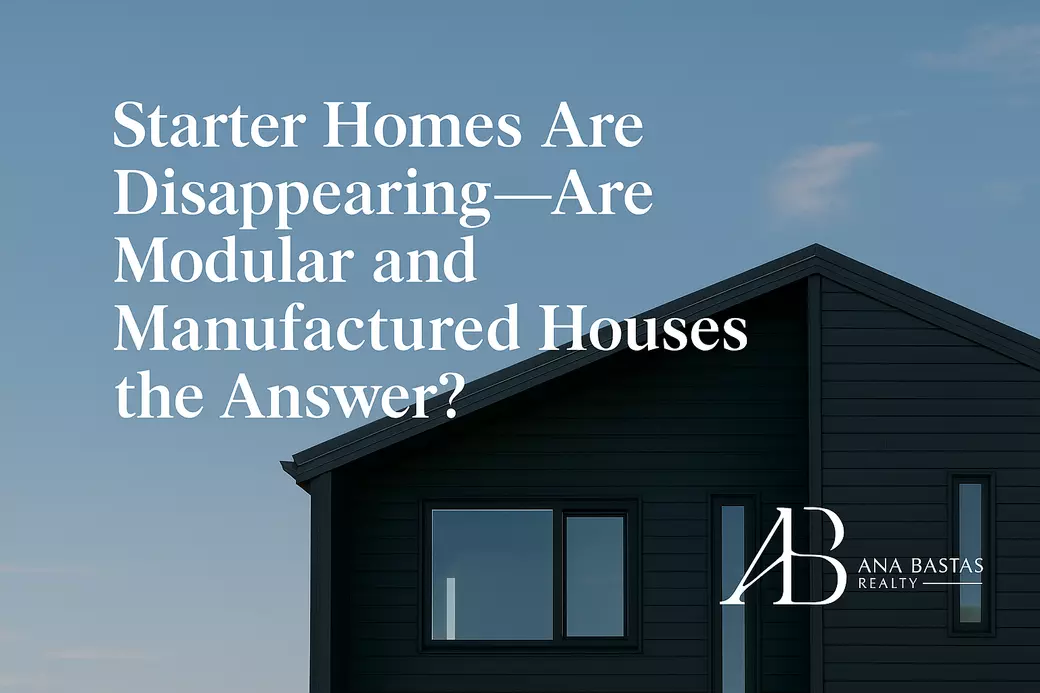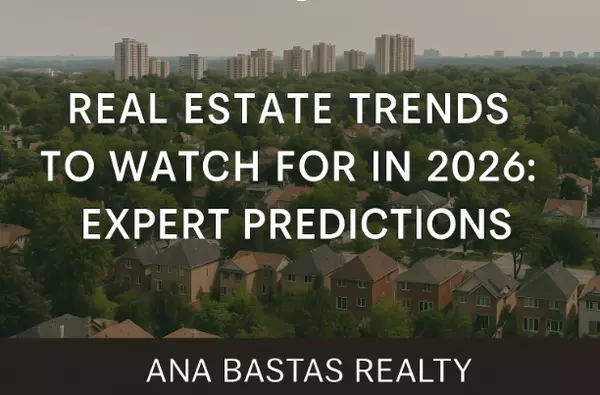Modular and Manufactured Homes in Canada: The New Affordable Solution? | Ana Bastas Realty

Starter Homes Are Disappearing—Are Modular and Manufactured Houses the Answer?
For decades, the “starter home” was a rite of passage — a small but cozy first step into homeownership. But across Ontario and much of Canada, those entry-level homes are becoming harder to find. Rising land costs, stricter zoning rules, and limited new supply have pushed prices higher, leaving many first-time buyers wondering:
Are modular and manufactured homes the new solution?
Let’s explore what’s driving this shift — and whether these innovative housing types could be the key to affordability in today’s market.
1. The Vanishing Starter Home
In the Greater Toronto and Hamilton Area, the typical detached starter home once cost under $400,000. Fast forward to 2025, and that same property often exceeds $800,000 to $1 million.
As demand continues to outpace supply, many developers have shifted toward larger, higher-margin projects, leaving fewer small-scale options for first-time buyers.
2. Modular and Manufactured Homes—What’s the Difference?
These terms are often used interchangeably, but they’re not the same:
-
Modular homes are built in sections in a factory, transported to the site, and assembled on a permanent foundation. They meet the same building codes as traditional homes and can appreciate in value.
-
Manufactured homes (formerly “mobile homes”) are built entirely off-site on a steel frame and delivered complete. They typically fall under different zoning and may be located in land-lease communities.
Both options drastically reduce construction time and costs — a modular home can be move-in ready in as little as 3–4 months after permitting.
3. Why Modular and Prefab Are Gaining Ground in Canada
The affordability challenge has sparked innovation. Across Ontario, prefabricated housing communities are becoming more common, offering ownership options at a fraction of traditional costs.
Municipalities are also exploring zoning reforms to allow gentle density — such as garden suites, laneway homes, and modular builds — to help meet housing demand.
With high labour costs and limited skilled trades, factory-built housing ensures consistent quality while shortening timelines and reducing waste — an increasingly attractive model for environmentally-conscious buyers.
4. Financing and Insurance: What Buyers Should Know
While financing modular homes is similar to traditional mortgages, some lenders may treat manufactured homes differently, especially if the land is leased.
Buyers should always:
-
Confirm the home’s CSA certification (Canadian Standards Association).
-
Ensure the property has municipal approvals or zoning compatibility.
-
Speak with an experienced mortgage broker familiar with alternative housing.
5. The Future of Affordable Ownership
As affordability pressures continue, modular construction could redefine the starter home. They’re faster to build, energy-efficient, and customizable, making them ideal for first-time buyers, downsizers, or investors.
And as provinces like Ontario push for 1.5 million new homes by 2031, modular may play a major role in achieving that goal.
Final Thoughts
Starter homes may be vanishing, but affordable ownership doesn’t have to.
Exploring new housing models like modular and prefab could open the door — quite literally — for more Canadians to become homeowners in 2025 and beyond.
At Ana Bastas Realty, we help buyers navigate every option, from pre-construction to resale to innovative modular opportunities.
📞 289.670.5888 | 🌐 www.anabastas.ca
🏡 Experience the AB Advantage™
Categories
Recent Posts











"My job is to find and attract mastery-based agents to the office, protect the culture, and make sure everyone is happy! "
